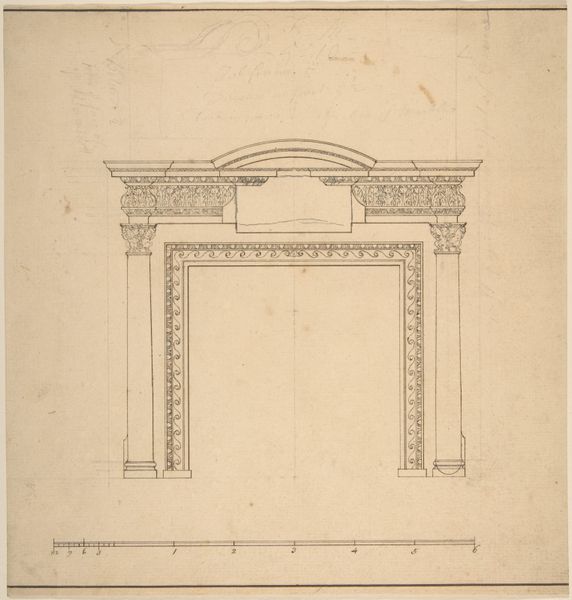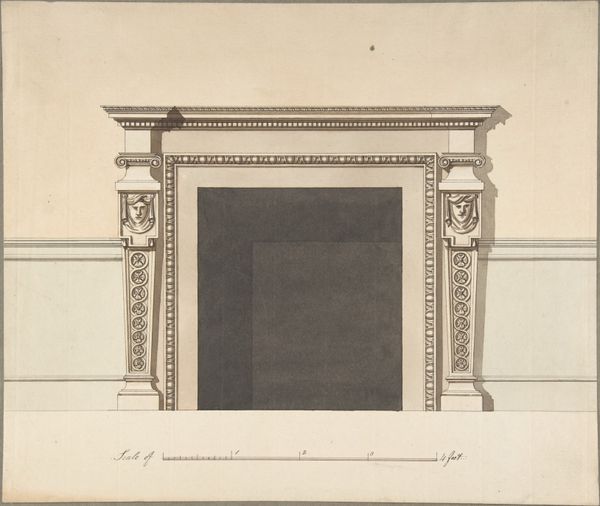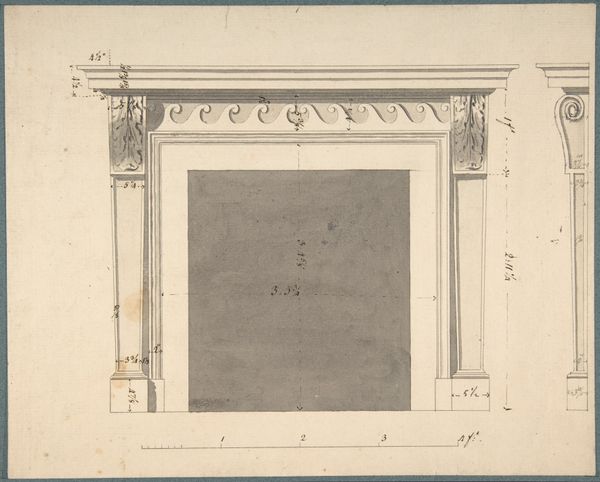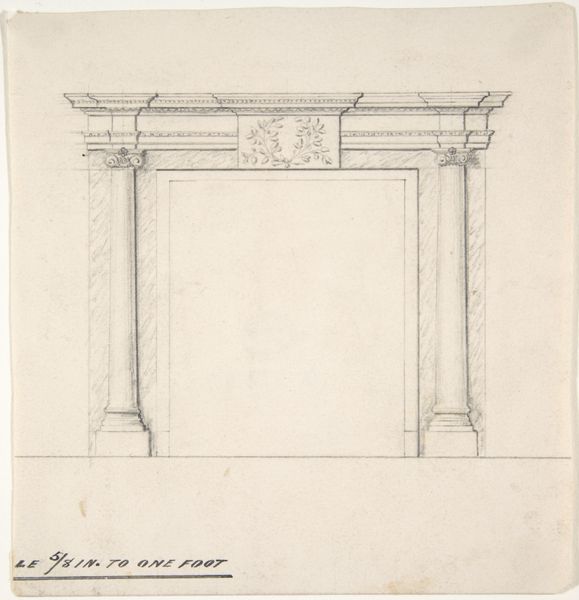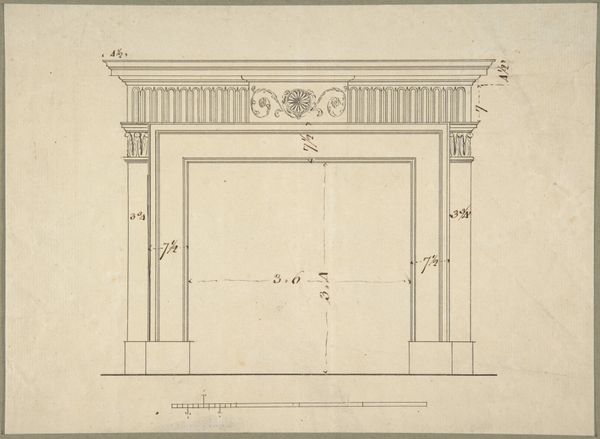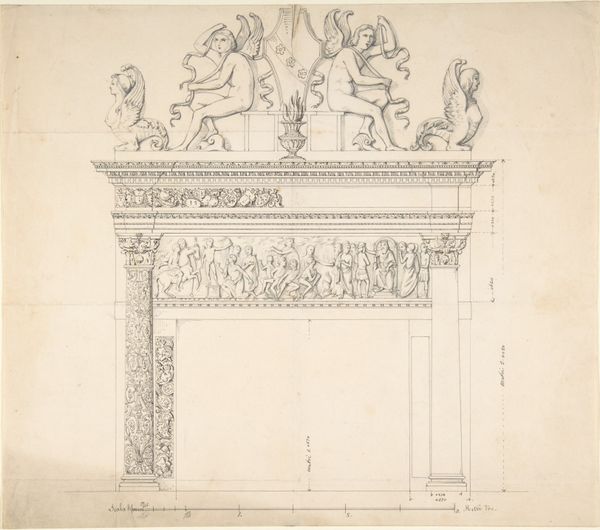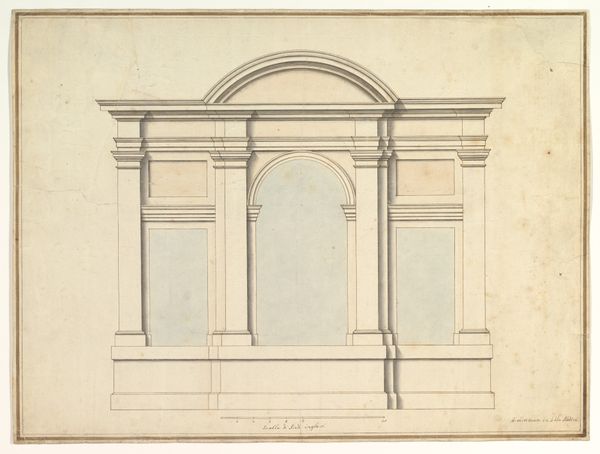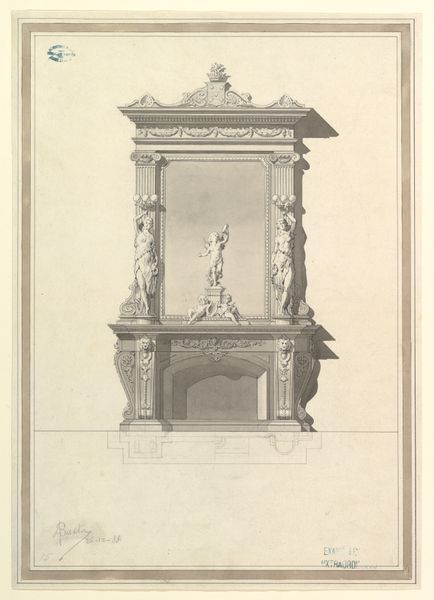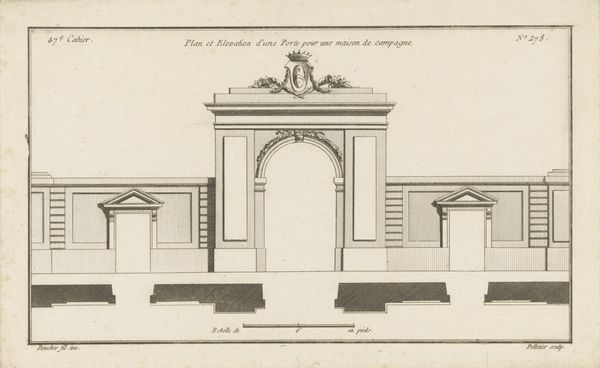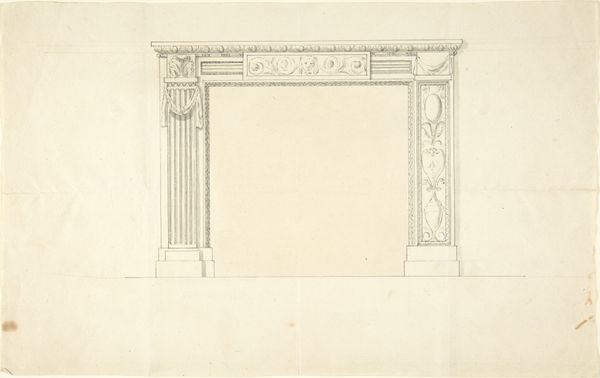
drawing, print, engraving, architecture
#
drawing
#
baroque
#
neoclassicism
# print
#
engraving
#
architecture
Dimensions: sheet: 7 3/16 x 8 1/16 in. (18.2 x 20.5 cm)
Copyright: Public Domain
Curator: Let’s discuss this intriguing engraving by Isaac Ware, titled "Chimney to the Parlour, Houghton Hall, Norfolk," dating back to 1735. It's currently housed here at the Metropolitan Museum of Art. Editor: It has such an austere presence. Despite the classical details, the stark lines and grey tones create a solemn feeling, almost like a mausoleum for warmth, though I am getting slight vibes of Ancient Greece or Rome with its formal composition. Curator: Exactly! Ware, trained as a draughtsman and known for his practical books on architecture, has given us a blueprint rather than a romantic vision. The cross-section below emphasizes construction and mass production over pure artistry, almost. We are not in a painter's studio but a builder’s. Editor: True. The choice to depict a chimney piece, a utilitarian element, is interesting. I immediately start thinking of gender, class, and domesticity here. Whose labour was required to source materials, design and carve all the ornament? What was this space in the grand scheme? Who enjoyed its supposed warmth? The elite, obviously. Curator: Precisely. Houghton Hall was the seat of Robert Walpole, Britain’s first Prime Minister. So, the chimney piece, while providing warmth, was also a clear statement of power, taste, and, frankly, wealth. Every precisely rendered rosette and geometric line speaks to control—both architectural and social. Editor: It makes you think about the socio-economic context within which something like this could be conceived, produced and installed. The design is clearly intended to signal sophisticated aesthetic judgment, setting this parlour apart from cruder, more functional spaces. Also the act of printing this architectural element renders this exclusive world more publicly consumable for learning purposes, yet always just out of reach. Curator: Right. Consider the technical skill involved in both the construction and representation. The labor invested is masked by the cool Neoclassical aesthetic, a deliberate strategy to portray ease and effortless superiority. Editor: So, despite the cool lines, this print exposes inequalities, material processes, and complex power dynamics simmering beneath the surface of eighteenth-century British society. The chimney isn’t just a heat source; it’s a signifier of privilege. Curator: Yes, the careful process by Ware highlights the mechanics of power, permanently embedded within the walls of Houghton Hall, literally as an edifice within an edifice. Editor: A chilling thought made visually accessible by Ware's print.
Comments
No comments
Be the first to comment and join the conversation on the ultimate creative platform.
